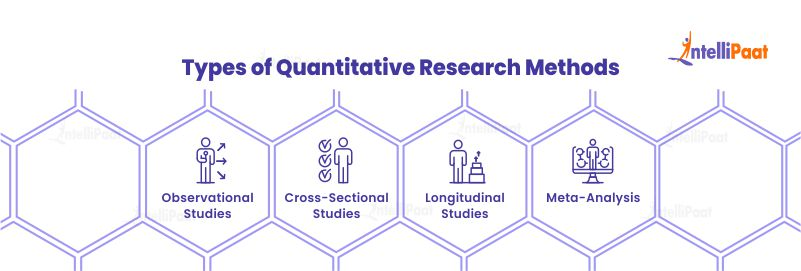What is Quantitative Method?
In this blog, we will dive deep to understand the quantitative method used in the field of data analytics. Also, we will provide a limelight on the types of quantitative research methods, their characteristics, and real-life applications of quantitative methods.
Given below are the following topics we are going to discuss:
- What do you understand from Quantitative Method?
- Why do we need the Quantitative Method?
- Types of Quantitative Research Methods
- Characteristics of Quantitative Method
- Application of Quantitative Method
- Conclusion
Watch this Data Analytics Course video to learn more about its concepts:
{
“@context”: “https://schema.org”,
“@type”: “VideoObject”,
“name”: “Data Analytics Course | Data Analytics For Beginners | Data Analytics Training | Intellipaat”,
“description”: “What is Quantitative Method?”,
“thumbnailUrl”: “https://img.youtube.com/vi/HqT54t87g1g/hqdefault.jpg”,
“uploadDate”: “2023-07-21T08:00:00+08:00”,
“publisher”: {
“@type”: “Organization”,
“name”: “Intellipaat Software Solutions Pvt Ltd”,
“logo”: {
“@type”: “ImageObject”,
“url”: “https://intellipaat.com/blog/wp-content/themes/intellipaat-blog-new/images/logo.png”,
“width”: 124,
“height”: 43
}
},
“embedUrl”: “https://www.youtube.com/embed/HqT54t87g1g”
}
What do you understand from Quantitative Method?
A group of research methodologies that involve the gathering and analysis of numerical data are referred to as quantitative methods. To examine events, finding patterns, correlations, and trends in the data, these techniques are extensively employed in a range of domains, including the natural and social sciences.
The capacity of quantitative approaches to offer precise and unbiased measurements is one of its main advantages. This makes it possible for researchers to compare various groups or circumstances and pinpoint causal links. In large-scale investigations, when data can be effectively gathered and evaluated using statistical software, quantitative research is extremely helpful.
Additionally, Researchers often use quantitative approaches because they give them a rigorous and unbiased way to examine events, along with finding patterns and links in the data.
Want to know more about data analytics? Enroll in this professional Data Analytics Course to learn from experts.
Why do we need the Quantitative Method?
There is a necessity for quantitative methods in the field of data analytics. As quantitative approaches offer a structured and impartial study methodology. To guarantee reliability and validity, researchers gather and evaluate data, using defined techniques. This is crucial when looking at events that are hard to quantify or directly perceive.
Furthermore, quantitative approaches enable researchers to conduct exact and impartial measurements. When researching factors that cannot be seen immediately, this is crucial. Social scientists, for instance, employ surveys to gauge attitudes or actions that cannot be directly seen.
Statistical software may be used to gather and analyze data effectively for large-scale investigations, which is another situation where quantitative approaches are effective and valuable. This makes it feasible for academics to examine huge datasets, check patterns, and trends that would be challenging to spot using qualitative approaches.
Types of Quantitative Research Methods
There are several quantitative research techniques. Some of the most common varieties are listed below:

- Observational Studies: Observational studies entail gathering and examining information from already-existing sources, such as government or medical records. Cross-sectional or longitudinal observational studies are also possible.
- Cross-Sectional Studies: Cross-sectional studies gather information from a sample of people at one particular moment. For finding trends and connections between variables, cross-sectional studies are helpful.
- Longitudinal Studies: Studies that gather data over a prolonged period of time from the same subjects are called longitudinal studies. For spotting changes and patterns over time, longitudinal studies are helpful.
- Meta-Analysis: In a meta-analysis, data from various studies are combined to examine the overall impact of a certain intervention or variable. The overall strength of the evidence in a certain field may be determined via meta-analysis.
Check out our blog on Data Analytics tutorial to learn more about Data Analytics!
Characteristics of Quantitative Method
There are numerous essential characteristics that set quantitative research approaches apart from qualitative ones. Some of the primary traits of quantitative techniques are as follows:
Structured approach: A systematic, predefined method for data gathering and analysis is what is known as a “structured approach” in quantitative research. This guarantees that data is gathered consistently and that the findings are accurate as well as valid.
Use of numerical data: Quantitative research makes use of numerical data, which is gathered and examined. After that, this data is evaluated statistically so that academics may spot patterns, connections, and trends.
Large sample sizes: Large sample sizes are frequently used in quantitative research to improve the representativeness and generalizability of the results. This makes it possible for researchers to extrapolate findings from the sample data to the entire population.
Objective and unbiased: Quantitative research attempts to be neutral and unbiased. This implies that any elements, such as subjective beliefs or values, which can skew the results are eliminated or taken into account by researchers.
Prepare yourself for the industry by going through these Data Analyst Interview Questions now!
Application of Quantitative Method
Numerous applications for quantitative research techniques may be found in a variety of sectors, such as:

- Market research: To understand customer behavior and preferences, quantitative research techniques are frequently applied. To gather information on customer opinions, product preferences, and purchase patterns, surveys and experiments are frequently utilized.
- Health Research: To discover risk factors for illness, assess therapies, and gauge health outcomes, quantitative research methods are frequently utilized in health research. Data on health-related factors are frequently gathered via randomized controlled trials and large-scale observational research.
- Education Research: To assess the efficacy of educational initiatives and programs, quantitative research methodologies are utilized in education research. Data collection methods for studying student performance, teacher effectiveness, and curriculum development, also include frequent surveys and experimental research methods.
- Social science Research: Social science study makes extensive use of quantitative research techniques to comprehend social phenomena, such as attitudes, behaviors, and social structures. Data on social factors are frequently gathered via extensive surveys, long-term studies, and experimental research methodologies.
- Environmental Research: Environmental factors, such as air quality, water quality, and climate change, are measured using quantitative research methods in environmental research. Data collection on environmental factors and their effects on human health and the environment often involves observational research and experiments.
Career Transition
Conclusion
Quantitative research methods have numerous applications across a wide range of fields, including market research, health research, education research, social science research, and environmental research. Quantitative research methods have contributed greatly to scientific knowledge and will continue to be an important part of the research process in the future.
We tried our best to make you clear about the topic, but if you are still left with any doubts, reach out to our Community page!
The post What is Quantitative Method? appeared first on Intellipaat Blog.
Blog: Intellipaat - Blog
Leave a Comment
You must be logged in to post a comment.












